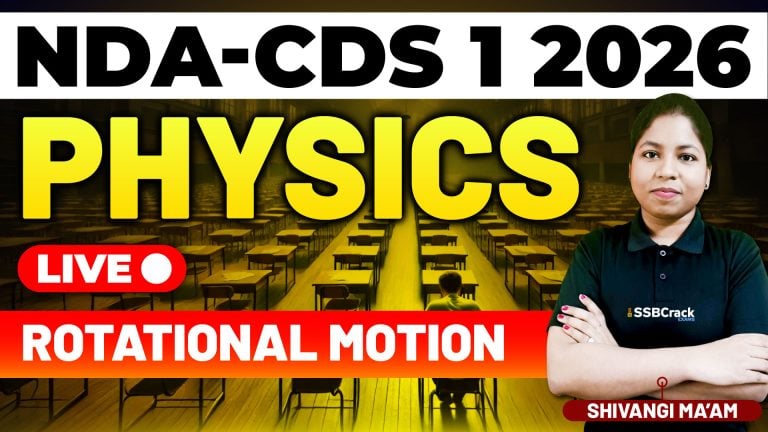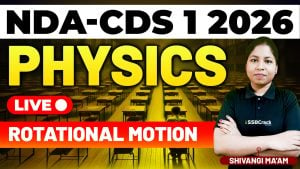Statistics, the compass guiding the analysis and interpretation of data, took center stage in the AFCAT-CDS 1 2024 Exam Math Statistics Class 2. This live session went beyond the basics, exploring advanced concepts such as Arithmetic Mean (AM), Geometric Mean (GM), Harmonic Mean (HM), and the visual representation of data through Bar Diagrams and Pie Charts. In this blog, we’ll delve into the key insights from the class, shedding light on the significance of these measures and the art of visually presenting statistical information.
Understanding Measures of Central Tendency: The class commenced with a review of essential measures of central tendency, reinforcing the participants’ grasp on the core statistical concepts.
- Arithmetic Mean (AM): Participants revisited the concept of Arithmetic Mean, the average that is familiar to many. The class provided insights into how AM can be used to represent a typical value in a dataset, offering a foundation for more advanced statistical analyses.
- Geometric Mean (GM): The discussion expanded to the Geometric Mean, a measure emphasizing the role of multiplication in statistical analysis. Participants explored scenarios where GM becomes particularly relevant, offering a different perspective on the central tendency of a dataset.
- Harmonic Mean (HM): The class dissected the Harmonic Mean, a measure that showcases the importance of reciprocal values in certain contexts. Participants gained insights into situations where HM becomes a more suitable measure of central tendency.
Visualizing Statistical Data: The class then transitioned into the realm of visual representation, recognizing the power of visual aids in conveying complex statistical information.
- Bar Diagrams: The instructor guided participants through the art of creating Bar Diagrams, a visual representation that uses bars of different lengths to represent different categories or groups of data. Practical examples illuminated the effectiveness of Bar Diagrams in presenting comparative information.
- Pie Charts: Pie Charts emerged as a powerful tool for visualizing proportions within a whole. Participants explored the construction of Pie Charts and learned how to convey percentages and relative contributions of different components within a dataset.
Problem-Solving Strategies: Throughout the class, theoretical discussions were complemented by practical examples, equipping participants with problem-solving strategies applicable to a variety of scenarios.
- Real-world Applications: Practical examples were presented with a focus on real-world applications. Participants were guided through scenarios where the concepts discussed in class could be applied, fostering a deeper understanding of statistical principles.
- Strategic Data Presentation: The class went beyond the basics of statistics, emphasizing the importance of strategic data presentation. Participants learned how to choose the most appropriate measure of central tendency or visualization method based on the nature of the data and the message they intended to convey.
Applications of Measures: As the class progressed, the discussion delved into practical applications of the measures of central tendency and visual representations.
- Decision-making Insights: Participants gained insights into how these measures and visualizations can inform decision-making processes. From business scenarios to public policy considerations, the class highlighted the diverse applications of statistical tools in real-life situations.
- Effective Communication: The importance of effective communication through statistics was underscored. Participants learned how to present complex information in a clear and accessible manner, ensuring that statistical insights are not lost in translation.
Conclusion: AFCAT-CDS 1 2024 Exam Math Statistics Class 2 was not merely an exploration of statistical concepts; it was a strategic journey through the advanced measures of central tendency and the art of visualizing data. By delving into Arithmetic Mean, Geometric Mean, and Harmonic Mean, participants gained a more nuanced understanding of the central tendencies within datasets.
The discussion on Bar Diagrams and Pie Charts added a visual dimension to statistical analysis, providing participants with powerful tools for conveying information effectively. Practical examples and problem-solving strategies ensured that participants weren’t just acquiring theoretical knowledge but were also developing the skills needed to apply statistical concepts strategically.
As candidates continue their preparation journey, the insights gained from Statistics Class 2 will serve as a valuable asset. Armed with a thorough understanding of advanced measures and visual representation techniques, participants are now better equipped to navigate the statistical challenges of the AFCAT-CDS 1 2024 Exam with confidence and precision. Statistical navigation, once perceived as complex, has been illuminated, thanks to the comprehensive insights and practical knowledge imparted in AFCAT-CDS 1 2024 Exam Math Statistics Class 2.


















